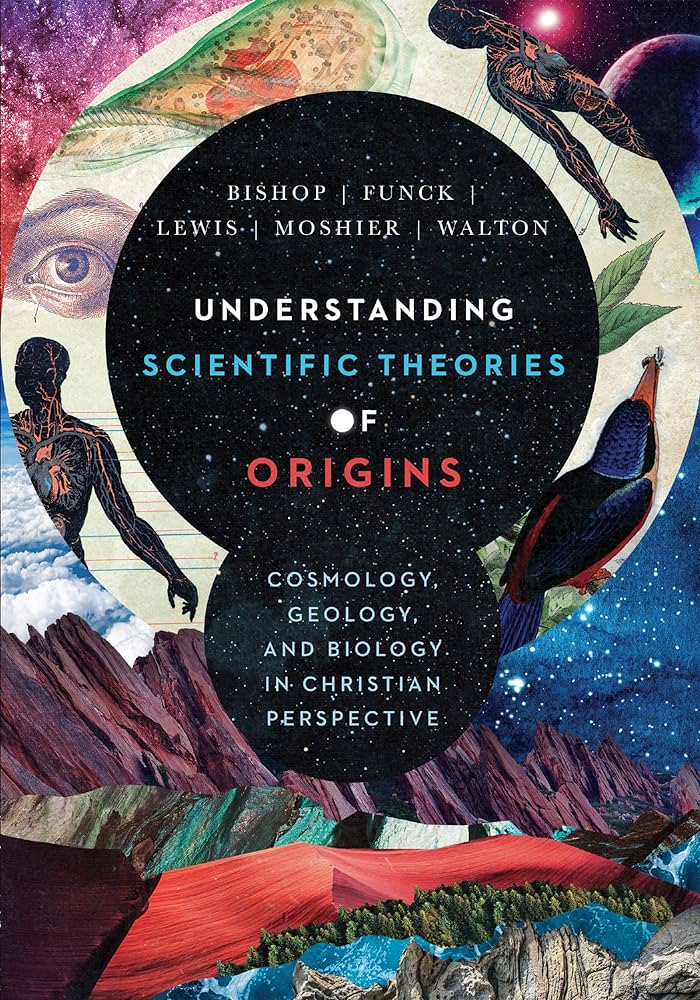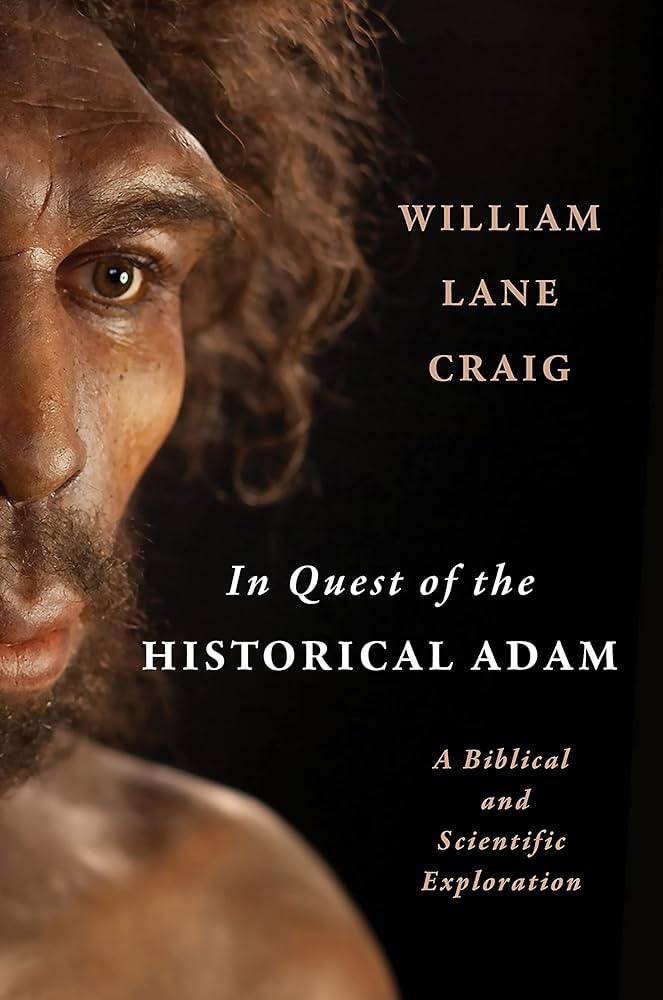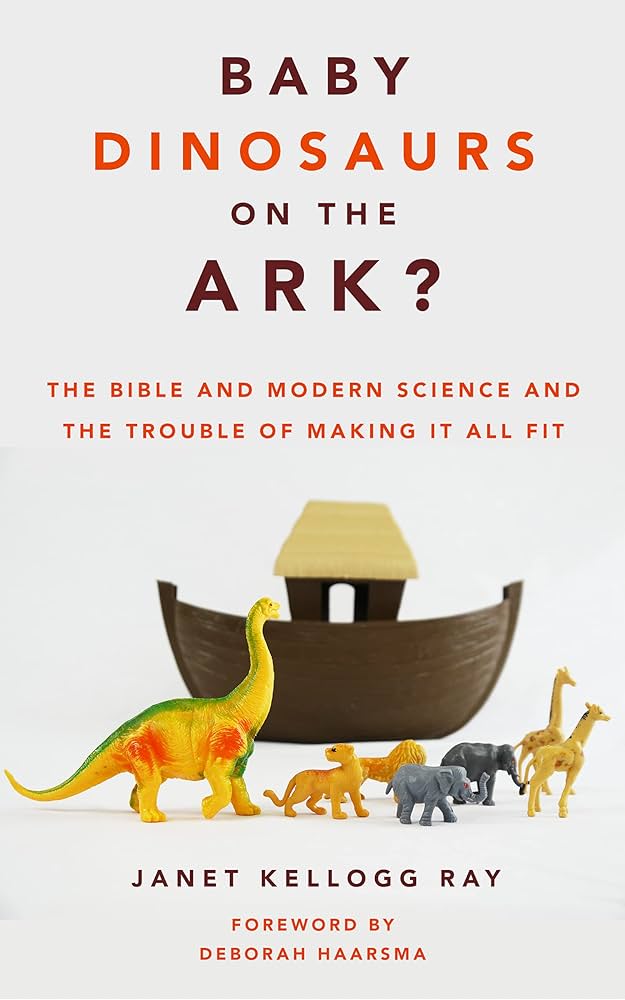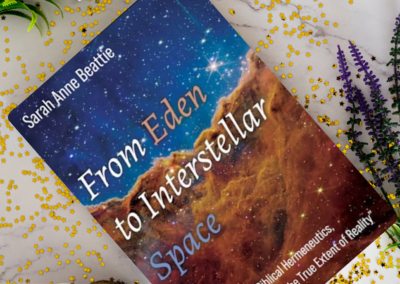
Philip reviews: ‘Understanding Scientific Theories of Origins: Cosmology, Geology, and Biology in Christian Perspective’, ‘In Quest of the Historical Adam: A Biblical and Scientific Exploration’, and ‘Baby Dinosaurs on the Ark? The Bible and modern science and the trouble of making it all fit’.
January 2022
I read these books on my phone recently. I tend to be a slow reader, often referring to notes or to previous references, and read a small section of a book each day at lunch and at bedtime, but with persistence, I can manage to munch through some tomes with persistence.
1) Understanding Scientific Theories of Origins: Cosmology, Geology, and Biology in Christian Perspective

Robert C. Bishop, Larry Funck, Raymond J. Lewis, Stephen O. Moshier, John H. Walton
($83 on Amazon. This is part of a five-volume series: BioLogos Books on Science and Christianity (5 books); scroll down to find Understanding Scientific Theories of Origins.
This is a highly ambitious book (688 pages) from the BioLogos group, based on the authors’ Theories of Origins course at Wheaton College. The authors’ expertise includes the history and philosophy of science, chemistry, biology, geology, and Old Testament.
The book covers the following topics:
• Principles of biblical interpretation and a comprehensive Trinitarian doctrine of creation ~100 pages
• Cosmic origins ~100 pages
• The geologic history of Earth ~150 pages
• The origin of life on Earth ~110 pages
• The origin of species and diversity of life ~100 pages
• Human origins, new creation and creation care, science education ~60 pages.
The number of pages spent in each area is roughly proportional to the amount of detail. The detail of discussions into geologic history, and the origin of life is particularly noticeable when you are reading; sometimes the point of the detail is lost as a result. I suspect this may be to provide an alternative to the weight Creation Science places on Flood Geology, the Grand Canyon etc. The section on human origins is good and deals with the text of Genesis 2 and 3, palaeontology, genomics and a biblical and theological perspective. However, to my mind the comparative space for this section means it treats the genomic evidence, for instance, a bit more superficially.
The section on the nature of Adam and Eve seems to me highly ambivalent. A small box deals with the New Testament references and concludes that “Paul makes no claim about genetic relationships of all people to Adam or about material origins” – only that we share the “dust” nature of the human archetype. The very next line says “In summary the NT indicates that there was a historical point in time when sin and death became human realities, necessitating salvation. Furthermore, it is clear that Adam and Eve were the principal parties, real people in this real event in a real past.” It is not clear to me that they have demonstrated the truth of that last statement. Nor is it obvious, how Adam and Eve instigated sin and death for all humans if they were not progenitors of the whole human race. Appealing to a “Most Recent Common Ancestor” (MRCA) does not help, because the MRCA is not the only ancestor (many contemporary people of the MRCA are ancestors of some modern people, just none of them ancestors to everyone). Furthermore, the title of MRCA is like that of elected leaders, it changes hands as groups of descendants no longer leave progeny.
The strength of the book, besides its attempt to be comprehensive, is in its formulation of a Doctrine of Creation. Key features of this are divine sovereignty in Creation, the functional integrity of creation (it hangs together, and produces amazing things), and that God’s action in Creation is mediated, by his Word, by the Son and the Spirit, and by Creation itself “Creation ministering to Creation’. In other words, creation itself mediates further creation, and the ‘laws of nature’ produce pattern and order, including living creatures, evidenced by Genesis 1:11 “Let the earth bring forth living creatures”. Throughout their subsequent sections, the authors continually refer back to the themes of the functional integrity of Creation and Creation ministering to Creation – too frequently, in my opinion, as it sometimes comes across as a special pleading.
Notwithstanding all of that, I enjoyed the book overall, and learnt a lot of detail about geologic history that I didn’t know before!
2) In Quest of the Historical Adam: A Biblical and Scientific Exploration

William Lane Craig
(576 pages. $49 on Amazon’s Kindle store.)
This book comes under the heading of ‘astonishing’ – astonishing in the bizarre sense, at least in my view. You may disagree.
William Lane Craig is described by Wikipedia as an analytical philosopher, Christian theologian and apologist. His book takes a very detailed look at the early chapters of Genesis in their context, including the other Ancient Near East (ANE) texts. He concludes that Genesis 1-11 is ‘mytho-history’:
“In sum, the striking resemblances between Gen 1-11 and the ANE myths lead one to think of the primaeval history as comprising Hebrew myths. Their primary purpose is to ground realities present to the Pentateuchal author and important for Israelite society in the primordial past. At the same time, the interstitching of the primaeval narratives with genealogies terminating in real people evinces a historical interest on the author’s part in persons who once lived and wrought. Even these genealogies, however, are carefully constructed so as to share in the character of the myths they order, contributing to the overall etiological purpose of the primaeval history.”
Interestingly, he also concludes that the original audience would have construed the trees in the garden or the snake, etc not as historical references but as pictures, and so they need not be read literalistically.
He next examines the New Testament references to Adam and Eve and cautions against overly easy proofs of Old Testament historicity on the basis of New Testament citations: “Such NT references to Adam and other figures…may describe merely the story world of Genesis, requiring at most truth-in-story (truth for the characters in the story, but not for readers of the story).” He then employs a very long and obtuse argument to conclude that Paul in 1 Corinthians 15:21-22 and Romans 5:12-21 is giving “clear assertions of the historicity of Adam. What is asserted of the historical Adam in these key passages does not, however, really go beyond what we have already affirmed on the basis of our genre analysis of the primeval history of Gen 1-11- namely, that there was a progenitor of the entire human race through whose disobedience moral evil entered the world.” This seems to me to contradict his conclusion from Genesis itself.
The really bizarre step is that he then goes looking for the historical Adam that he believes Paul asserts, not in the world of Genesis 1-3, nor the Neolithic period (Adam was told he would have to farm out his living, his sons were agriculturalists), but in ancestors to modern humans: “Given that all human beings are descendants of a founding couple -a theological, not a scientific commitment – Adam and Eve may be plausibly identified as belonging to the last common ancestor of Homo sapiens and Neanderthals, usually denominated Homo heidelbergensis.”. I don’t know where the word “plausibly” comes in, but it doesn’t make any sense to me that Paul, grounded in the Torah, would refer to any Adam other than the one of Genesis, which, as I have said roots Adam in the agricultural period, less than 8,000 years B.C. Nor does it make any sense that a tangled argument based on 12 verses, should commit us to the historicity of an Adam who originated human sin, when the rest of the New Testament, (including Jesus himself, Paul’s letter to the Galatians, and the other apostle’s books), make no mention of sin originating with Adam. Craig refers to the Most Recent Common Ancestor concept for his founding couple, which as I stated above, makes no biological sense.
I wouldn’t recommend this book unless you are drawn to strange leaps of logic.
3) Baby Dinosaurs on the Ark? The Bible and modern science and the trouble of making it all fit

Janet Kellog Ray
(277 pages $11-17 on Amazon Kindle.)
This is a real gem, and will make better holiday reading than either of the other two, whether you are tramping, cycling, camping, or even at home and at work.
The author is a biologist and self-described as a science educator and former creationist.
The first chapter, intriguingly, is entitled “The Biology Professor Who Doesn’t Believe in Science”. She goes on to say that she accepts science, but it is not a matter of belief for her, but accepting evidence. She writes in a very easy, relaxed manner and covers a surprising amount of material relating to geologic and biologic history.
Ray specialises in pointing out the many adjustments you have to make to your understanding of science to accept a young earth cosmology, flood geology and creation science. A list she makes at the end of the book to consider includes adjustments to the speed of light to see distant galaxies in 10,000 years, to the rate of ice-layer and ocean sediment accumulation, to the whole of geological science, to understanding genetic transformations, to the whole rationale for scientific research.
The last chapter, very helpfully, is entitled “Leaving Creationism (Without Leaving God).
Baby dinosaurs on the ark? Of course, how else would the dinosaurs fit in the ark and not consume all the food. It’s such an obvious answer it must be true (unless it was dinosaur eggs)!
Philip Pattemore is an Associate Professor of Paediatrics at the University of Otago Christchurch and an active member of the NZCIS Christchurch group. He is a scientific Advisor to NZCIS: view his profile HERE



